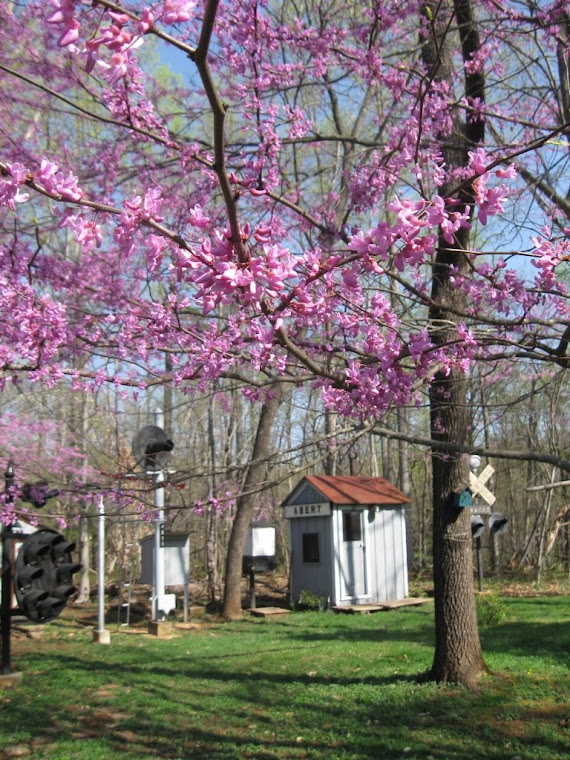



In July 2011 the restoration of my ninety year old Virginian Sheffield motor car 109 was completed. The car was carefully cleaned by hand sanding, electric sanding, chemical paint remover and sand blasting using tiny iron ore particles and coal dust. And every hour of it was pure pleasure. As I went through layers of paint I learned much of the car's history, eventually realizing that the car was originally orange. It was verified by former Virginian employees. In researching Virginian's motor cars I found that my car was built in 1921 and assigned to Victoria, Virginia, a major yard and division headquarters. Its original number was 905. I have made another blog about the restoration work itself with far more detailed information.
http://vgn109.blogspot.com/
The 109 is shown fully equipped and ready for a day's work. In the front, from left; the red tube contains flares and flags for safety needs, an iron milk crate which was used by many maintainers to transport their tools in the car, a bag containing a portable field telephone, an aluminum lunch bucket and a canvas pouch that held paper documents required by the railroad (current rule book, current employee timetable, various safety papers and a lineup of the day's train activities obtained at the start of the day from the dispatcher and updated during the day).

The Motor Car Shed (Tool House) is a 2/3 scale replica of the company's one car shed. In addition to providing a secure home for the motor car 109, it also displays tools and equipment used by Virginian Signal Maintainers. Tools are arranged on shelves and hung on side walls as they were in actual motor car sheds. On the rear wall, there are two water tanks, as described by George Lewis, a Virginian Signal Maintainer. The round tank was insulated and held cool, iced drinking water. The rectangular tank held water for washing while below was a bucket to catch wash water.




















